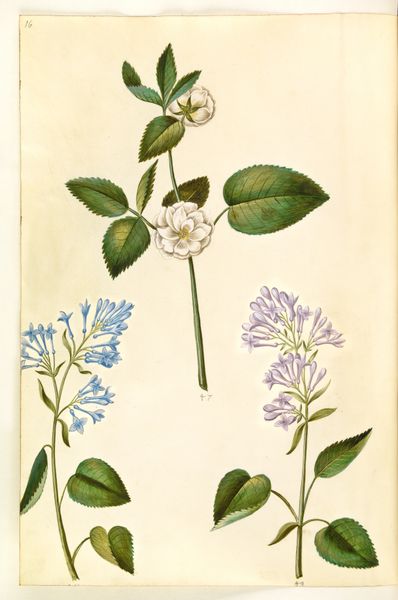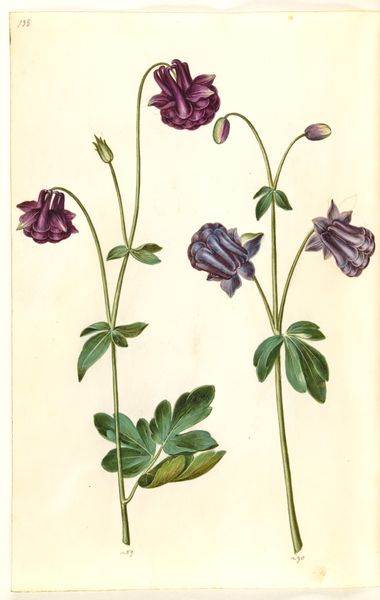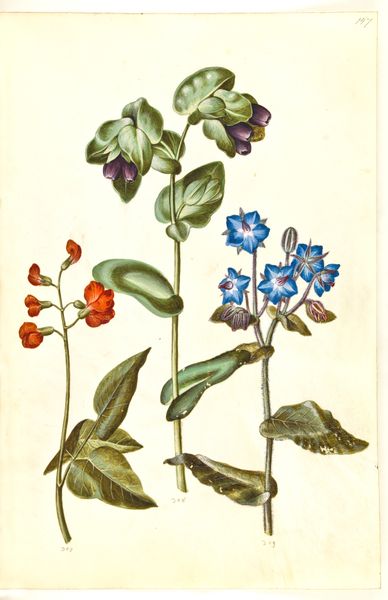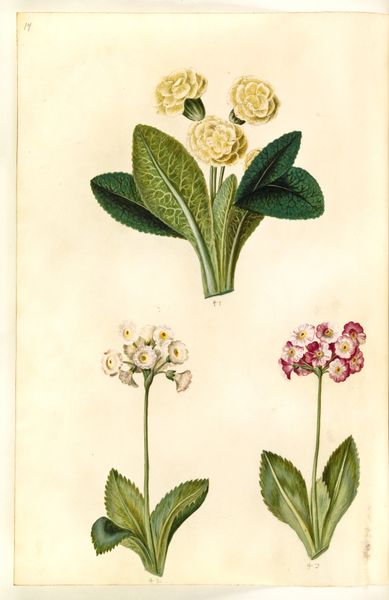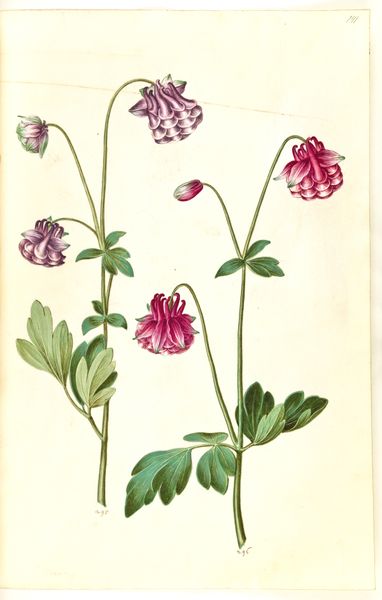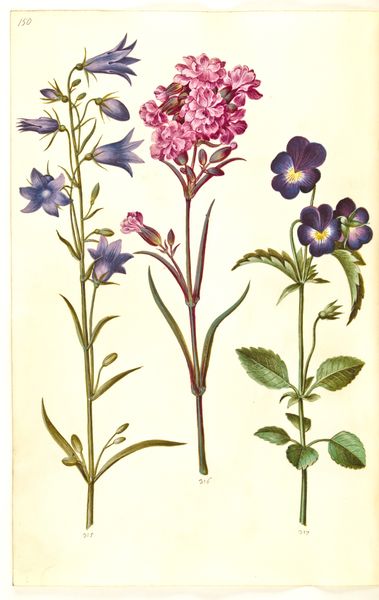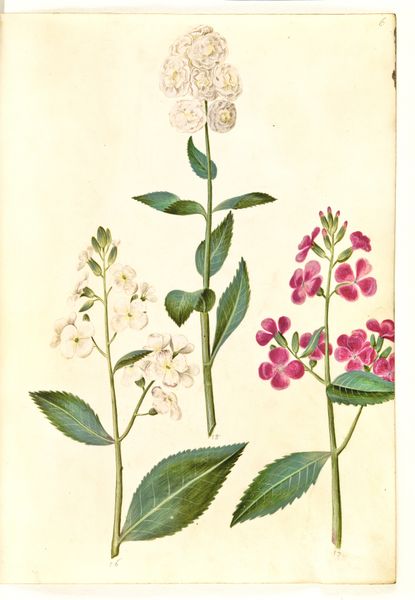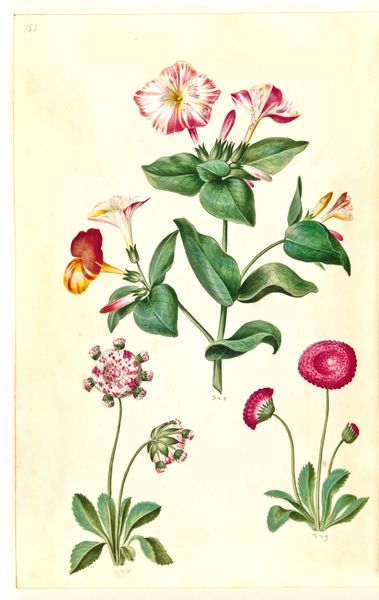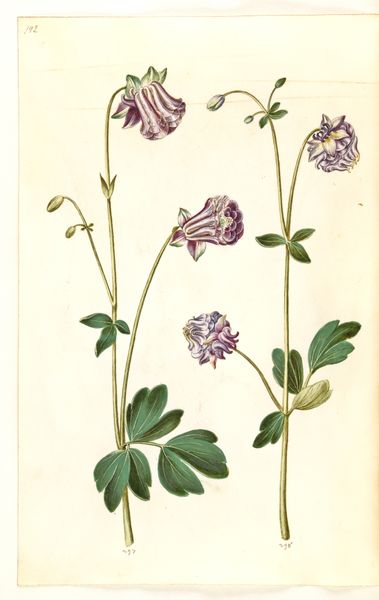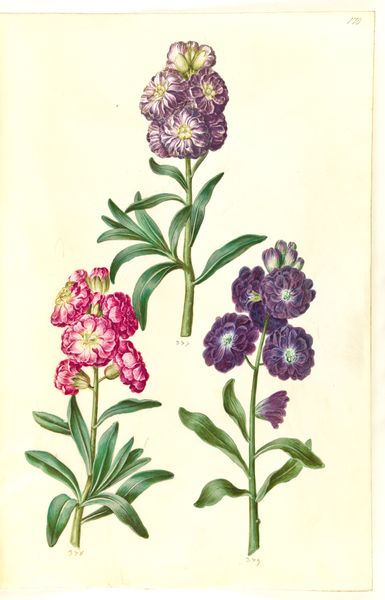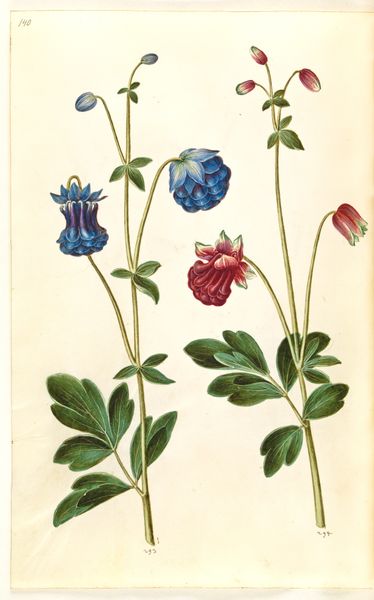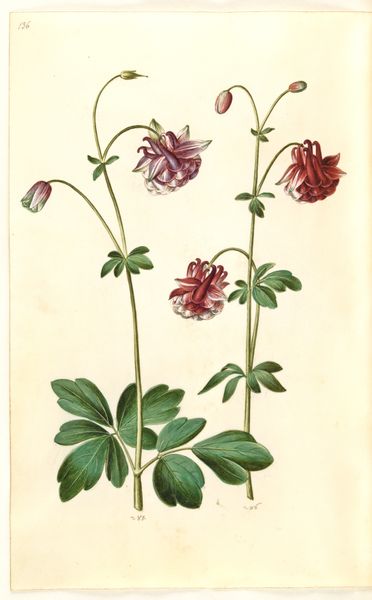
drawing, gouache
#
drawing
#
gouache
#
11_renaissance
#
food illustration
#
botanical art
#
watercolor
Dimensions: 375 mm (height) x 265 mm (width) x 85 mm (depth) (monteringsmaal), 358 mm (height) x 250 mm (width) (bladmaal)
Editor: Here we have "Viola odorata (marts-viol)," a gouache and watercolor drawing by Hans Simon Holtzbecker, created sometime between 1635 and 1664. It strikes me as quite meticulous. What's your take on it? Curator: I find it interesting to consider this work not just as botanical illustration, but as a product of its time, embedded in a web of material and social conditions. The use of gouache and watercolor is interesting. Where did Holtzbecker source these materials? Pigments at that time weren’t uniformly available or priced. How did that shape his choices? Editor: That's a good point. I hadn't really thought about the pigments themselves as being tied to trade routes. How would that influence the artistic output? Curator: Precisely. Consider the paper too. Its origin and quality are important. Was it locally produced, or imported? The cost and accessibility of paper dictated who could engage in drawing and watercolor at this level. The very act of creation becomes a statement about resources and access. Furthermore, the “illustration” is, itself, a form of production. Who commissioned this? What purpose did it serve? Editor: So, by looking at the materials, the means of production, we understand who could have created this, and for whom? It becomes a piece of material culture as much as art. Curator: Exactly. Even the detailed rendering hints at the meticulous labor involved, connecting the piece to the artist’s own conditions of work. Where did Holtzbecker train, what was the relationship of apprenticeship within guilds, workshops, or families, and what specific skills did he refine through social networks? Editor: It's a whole different way of looking at art; less about pure aesthetics, and more about the social and economic forces involved. It is intriguing to consider this "simple" floral drawing as the result of something bigger. Curator: Yes, and recognizing these connections transforms our understanding and appreciation of the artwork.
Comments
No comments
Be the first to comment and join the conversation on the ultimate creative platform.
